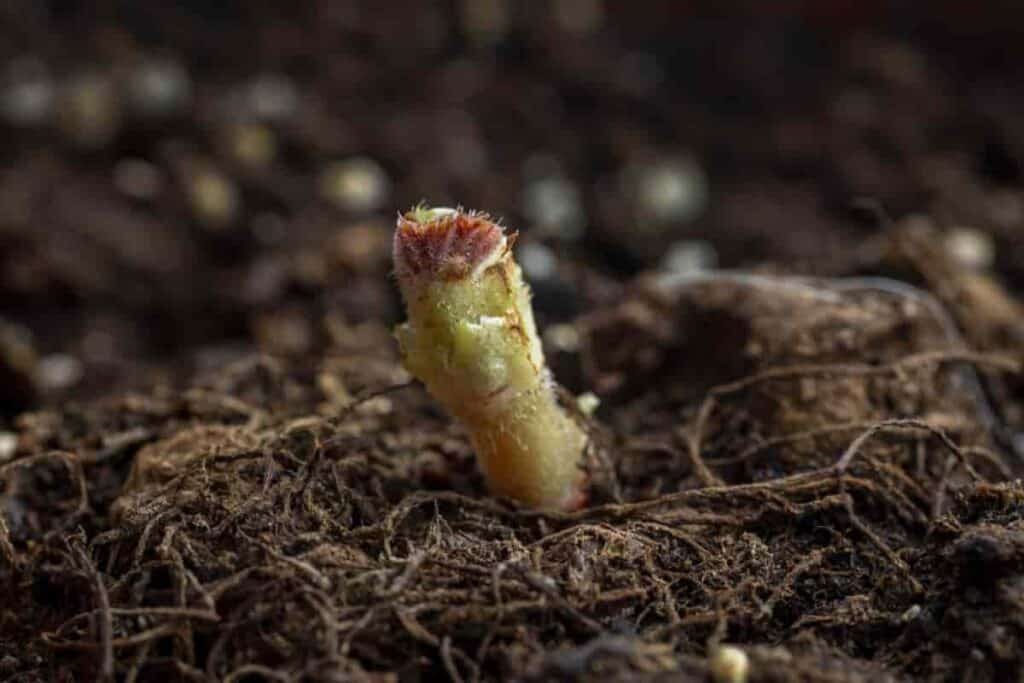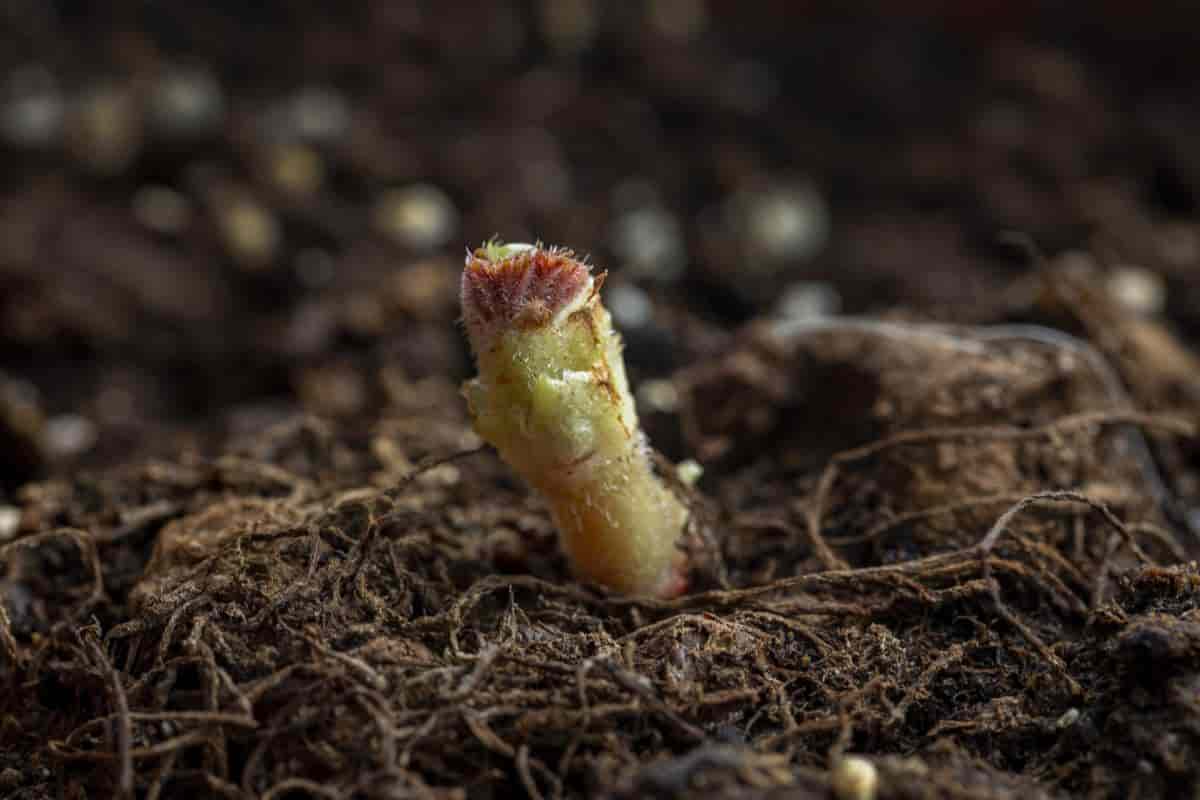Getting off to a good start with tuberous-rooted begonias should present no problem to home gardeners and, in fact, even to beginners. Sometimes the tubers are slow in sprouting, but once the buds break, growth is rapid.
Secure firm tubers from a reliable dealer and try several types to get acquainted with the wide variety of flower forms you can enjoy during the summer.

In ordering tubers, I found the excessive size unimportant in bloom production.
Wide Range Of Imported Tubers
American-grown tubers offer a wider color range than imported kinds, and those offered by specialists are worth the extra cost.
Tubers are best started 6 to 8 weeks before the plants are set out. Flats, small boxes (at least 3” inches deep), or bulb pans are easy to handle for this purpose.
Mixtures Of Tubers
The starting mixture I found satisfactory consists of two parts thoroughly damp peat moss and one part sharp sand.
Press the tubers, concave side up, into the mixture, allowing 2” inches between them each way, and water well. Then keep at a temperature of at least 60° degrees Fahrenheit until sprouting starts.
They can be placed in the basement, under the bench in the greenhouse, or wherever there is space.
As soon as growth starts, bring it into normal daylight since the sprouts will become spindly if kept in the dark for too long.
When the plants have developed several leaves, they are ready for potting in six-inch bulb pans.
The Potting Mixture
The potting mixture is of prime importance since the tubers give the most rewarding performance when supplied with readily available plant food in well-drained soil.
My preference consists of the following:
- A mixture of 1/3 well-rotted manure (use compost if manure is not available)
- 1/3 peat moss
- 1/3 fertile garden soil
I add one 4”-inch pot of steamed bone meal to each bushel of this mixture. If the soil is heavy, add enough sand to make it crumbly.
As you place the tubers in pots, keep as much of the starting mixture as possible on the roots.
Be sure to set them no deeper than the first planting. After potting, water the young plants thoroughly to help settle the soil.
Occasional Spraying Of Foliage
Occasional spraying of the foliage is also desirable but keep out of sunlight until the leaves have dried off.
Successive watering should be given carefully until plants are well established. Otherwise, the soil can easily become waterlogged and even turn sour.
Since tuberous-rooted begonias are especially tender, they must not be set out until all danger of frost has passed and the ground is thoroughly warm.
The soil mixture in the garden should be prepared the same as for potting. However, some gardeners prefer to sink the pots rather than set the plants directly in the ground.
Importance Of Moisture
Once the plants are set out, they must not be allowed to dry out because drought affects growth, the quality of the foliage, and the size of the blooms.
Plants placed in groups on a terrace or several levels for a tiered effect will require more watering care.
Begonias grown in wooden boxes do not dry out as quickly as those in clay pots.
Applications of liquid fertilizer at intervals of 3 or 4 weeks during the growing season will also keep the plants in vigorous growth.
However, too much plant food will result in rank growth and cause the plants to topple during heavy rain.
Ideal Light Requirements
Although tuberous begonias are considered ideal plants for shady places, they require more sunlight than is sometimes given.
On the west coast, they are grown commercially in lathe houses where they get about 50% percent of normal sunlight daily.
Filtered sunlight or high shade is ideal for these spectacular favorites. Unfortunately, spots, where surface tree roots compete for moisture will rob these shallow-rooted plants of plant food and water.
Locations where begonias get early morning or late afternoon sun will usually produce good results.
Where shade is dense, plants grow unusually tall and floppy, and flowering is often disappointing.
From the standpoint of color, tuberous-rooted begonias offer a wide range — from pure white to deepest red, with many pastels of great delicacy and rich tones. In flower form, too, they are distinctive.
Camelia-Flowered Kinds
The most popular are the double camellia-flowered kinds, which measure 4” to 8” inches in diameter.
Within recent years, the multiflora, with small double or single flowers borne in clusters, have been widely planted.
These can stand more sun than the large-flowered types and are particularly desirable for their free-flowering habit.
Popular Camellia-Flowered Types
In addition to the popular camellia-flowered type, dealers offer the following:
- The double Fimbriata or carnation flowered
- Picotee, two-toned, with contrasting edges or borders
- The unusual double-ruffled forms
There are also the following:
- Singles
- Semi-doubles, listed as the crisps type, with two rows of petals
- Crested forms
- Frilled varieties
Begonia Novelty Flowers
Here are also begonia novelties offered by dealers:
- Begonia Narcissiflora
- Daffodil-Flowering Begonia
- Begonia Lloydi
- The Hanging Basket Begonia
- Hymenaea Martiana
- The Hollyhock Begonia
Factors Resulting In Blossom Drops
Overwatering, overfeeding, and excessively hot weather are the usual causes of bud and blossom drops. Therefore, drainage is of vital importance, particularly where rainfall is heavy.
During long, dry spells, watering the plants with a fine spray will help to increase the humidity and provide conditions similar to those in the tropical jungles where these plants are native.
Controlling Troublesome Pests
Fortunately, few pests trouble tuberous begonias. Slugs and snails can be controlled by poison bait.
Stem rot attributed to manure occurs occasionally but is seldom serious. The most challenging disease affecting the plants is powdery mildew, which disfigures the foliage seriously.
However, control is successful with Captan, a recently introduced fungicide. Badly infected plants should be destroyed rather than kept for another season.
44659 by Edna M. Roberts
